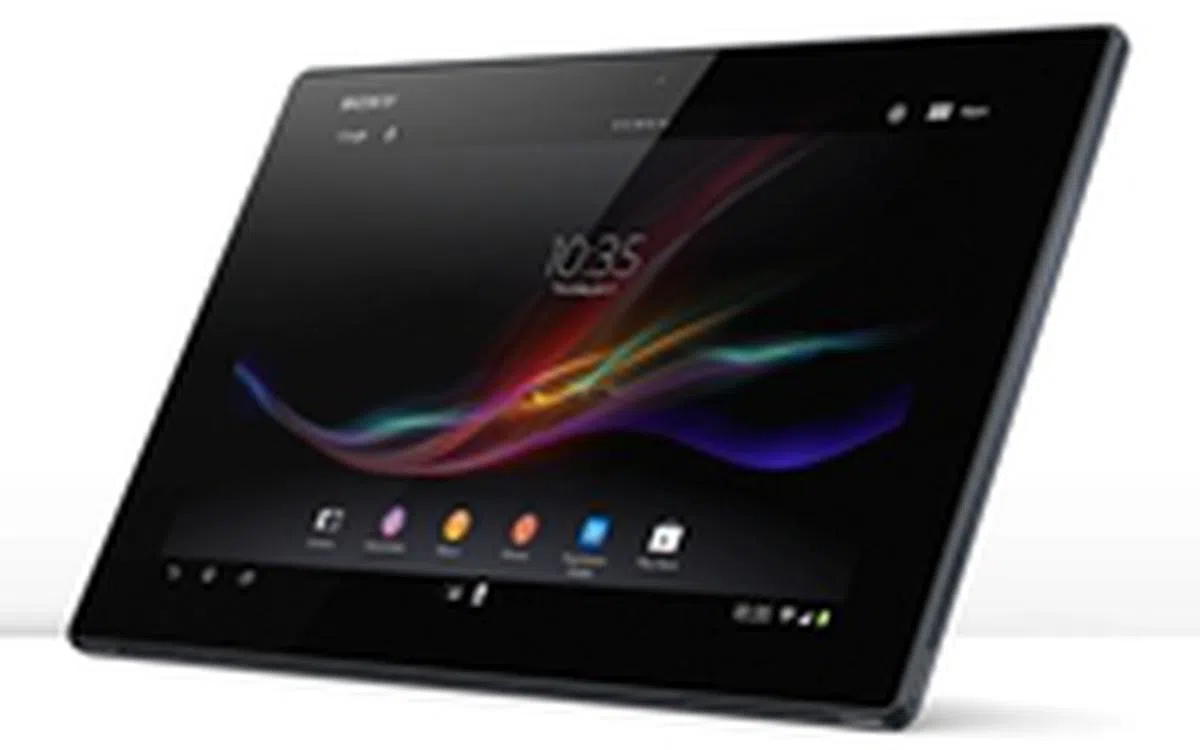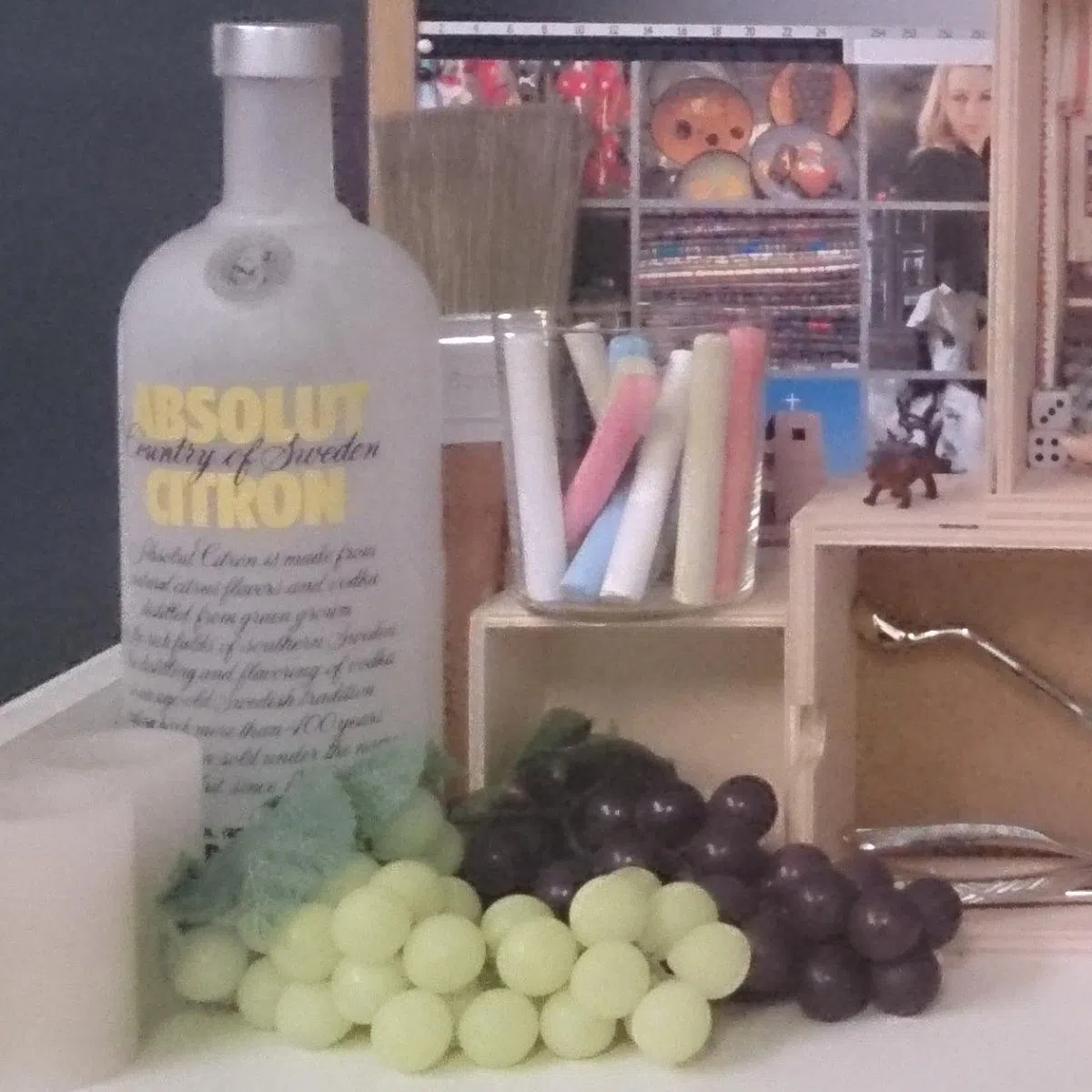Sony Xperia Tablet Z - The World's Thinnest Tablet
Riding on the coat tails of Sony's somewhat unexpected smartphone resurgence this year, Sony's Xperia Tablet Z is an ultra thin, high-end, 10.1-inch Android tablet built from the same design qualities as its Xperia Z smartphones: sleek, black, waterproof. We find out if Sony's latest tablet has the winning formula.
By HardwareZone Team -
The Sleekest Tablet Yet
To date, Sony’s forays into the tablet market have been somewhat lackluster - the Tablet S, Tablet P and Xperia Tablet S all received rather lukewarm receptions - but its latest offering, the Xperia Tablet Z, may change Sony's fortunes. Riding on the coat tails of Sony's somewhat unexpected smartphone resurgence this year, first with the 5-inch Xperia Z, and most recently with the 6.4-inch Xperia Z Ultra phablet, the Xperia Tablet Z is an ultra thin, high-end, 10.1-inch Android tablet built from the same principles as the Xperia Z smartphones: sleek, black, waterproof. We find out if Sony's latest tablet has the winning formula.
 | Key highlights of the Sony Xperia Tablet Z
|
N.B. We will be reviewing the 16GB 4G LTE model.
Design and Features
Unlike the unconventional 'fold-design' wedge-shapes of Sony's Tablet S and Xperia Tablet S, this time, Sony has opted for a minimalist rectangular design for the Xperia Tablet Z, which is pretty much just an extra larger version of the Xperia Z smartphone. The no-nonsense design actually works really well in tablet form as, thanks to its insanely thin 6.9mm edge (thinner than the Xperia Z smartphone, Motorola RAZR, iPad Mini, and pretty much everything else out there), it almost feels like you're just holding a screen in your hands - it's light too, at just 495g.

The Xperia Tablet Z is the thinnest tablet available.
One minor concern with the Tablet Z's ultra thin form factor is that it has a fair bit of flex, which can be somewhat unnerving. However, it does have the same glass fibre polyamide 'OmniBalance' design that runs around the edge of Sony's Xperia Z smartphone, so it should be able to survive a few knocks and drops.
Like the Xperia Z smartphone, the Tablet Z's lone distinctive design touch is a round, silver power button located at the top of the left edge. The power button is actually a bit smaller than the one on the Xperia Z smartphone.

Like the Xperia Z smartphone, the Tablet Z has a distinctive, round silver power button.
Where the Tablet Z differs from its smaller smartphone sibling is the rear, which features a matte black finish rather than the smartphone's glass panel. While it doesn't look quite as premium, we actually prefer the finish as, not only do you not have to worry as much about unsightly fingerprints (although it still gets a bit grubby), it also provides a bit of extra grip (useful for when you're using the Tablet Z in the shower!). Anecdotally, we also found that the rear of the Tablet Z doesn't heat up quite as much as the Xperia Z.

The rear of the Tablet Z is a flat, matte black. While it's not a fingerprint magnet like the glass panel back of the Xperia Z smartphone, it still gets a bit grubby.
IP57 Certified - Dust and Waterproof
Like the Xperia Z smartphone, the Tablet Z boasts an IP57 rating, which means it's dust resistant and waterproof. However, this also means that all ports are sealed by a pull out door when closed, which can be quite fiddly to open.

There's no need to worry about accidental drink spills with the Xperia Tablet Z.
While the Tablet Z's waterproof capabilities might make it a tempting option for watching your favorite Korean drama in the shower or bath tub, it should be noted that, any water falling onto the touchscreen tends to activate it, which can cause some annoying behavior (such as switching back to the homescreen, launching unwanted apps etc.). Likewise, while it won't suffer any damage from being immersed in water, you can't actually use the tablet underwater as the weight of the water on the touchscreen causes the same erratic behavior.
Display
The Tablet Z sports a 10.1-inch 1920 x 1200 pixel resolution TFT HD LCD display with a pixel density of 224 ppi, which is pretty good, and on par with that of the ASUS Transformer Pad Infinity 700, but falls short of the displays found on the Samsung Google Nexus 10 (2560 x 1600), and Apple iPad (4th Gen) (2048 x 1536). Nevertheless, the screen is bright and super sharp, with text looking especially good.
Unlike the Xperia Z smartphone, the Tablet Z displays excellent contrast with deep blacks. Colors are vivid too, if a bit on the warm side - it's not too apparent on its own, but when comparing white websites side by side with an Apple iPad (4th Gen), the Tablet Z comes off looking a little yellowish in comparison. Viewing angles aren't fantastic, but are much better than those displayed on the Xperia Z smartphone.
Unfortunately, like the Xperia Z, the Tablet Z's screen is super glossy and reflective, which is both a fingerprint magnet and problematic when you're trying to view dark content under bright lights.

The display is bright and sharp, but colors can look slightly warm.
Audio
The Tablet Z has two speakers located at both lower corners of the tablet. Each speaker has two speaker vents, one located on the bottom, and one on the left/right edge. The speakers themselves are only average in quality, lacking in bass and also a bit soft, which isn't helped by the fact that gripping the tablet by its sides often causes your hands to cover, and muffle, the edge speaker vents. While the Tablet Z boasts Sony's Clear Audio+ technology, which claims to enhance any audio played through the device, we failed to notice any difference with it turned on.

It's easy to accidentally cover the side-edge speaker vents when holding the Xperia Z in landscape orientation.
OS & Software
Like the Xperia Z smartphone, the Tablet Z runs a close to default version of Android 4.1.2 Jelly Bean, with just a few of Sony's own tweaks. The homescreen provides up to seven screens for apps and widgets, with a series of circles indicating which screen you're currently on. At the top-left of the screen there’s a bar where you can slot four of your favorite apps into (similar to Windows' Taskbar), which is useful for quick access to an app from wherever you are on the tablet.

The Tablet Z uses an almost vanilla version of Android 4.1.2 Jelly Bean with just a few improvements by Sony.
Sony includes a few of its own services and apps pre-installed on the Tablet Z, including Socialife, a content aggregator that shows posts from your various social networks in a Flipboard-like style, as well as Sony's Video Unlimited and Music Unlimited content streaming services. Of course not to forget is the availability of Sony's Small Apps feature that was first introduced on the Xperia Tablet S and it allows for certain level of multitasking; although options are limited, there are a few handy items.
Ports and Connectivity
Connectivity on the Tablet Z is fairly standard. You'll find the usual headphone port, micro-USB port for charging and connecting to your PC, a microSD card slot for increasing the Tablet Z's 16GB storage space and a SIM card slot for 4G LTE connectivity. As mentioned, to access these ports, you'll have to open a little door that seals the tablet when closed.

All ports on the Tablet Z are covered by a pull-out door that seals the tablet against water when closed.
As with the Xperia Z smartphone, the Tablet Z can also link with various Sony products with relative ease. For example, its NFC connection can be used to link to an Xperia Z smartphone to share a data connection, or to an NFC enabled speaker to play a song. You can also throw content to your Sony Bravia TV or wirelessly connect your Sony Playstation 3 Dualshock 3 controller. While it is possible to use these same features with other non-Sony brand devices, it's a bit more complicated to setup.
Performance
The Sony Xperia Tablet Z is one of the first tablets on the market to use Qualcomm’s 1.5GHz quad-core Snapdragon S4 Pro processor with 2GB of RAM making it one of the more powerful tablets currently available.
We will be pitting the Tablet Z up against a few of the most popular 10-inch choices out there, including Apple's iPad (4th Gen), Samsung's Galaxy Note 10.1, and Toshiba's Regza Tablet AT300. We'll also see how it fares against Sony's previous tablet, the Xperia Tablet S.
The following benchmarks were used for raw performance evaluation:
- Quadrant evaluates the CPU, memory, I/O and 3D graphics performance. This is an Android OS based test.
- Smartbench 2012 is a multi-core friendly benchmark application that includes both the Productivity and Gaming indices for a more complete gauge of the overall performance of Android tablets.
- SunSpider Javascript benchmark measures the browsing performance of the tablet and runs on any platform.
Sony Xperia Tablet Z | Sony Xperia Tablet S | Samsung Galaxy Note 10.1 | Toshiba Regza Tablet AT300 | Apple iPad (4th Gen) | |
Display | 10.1-inch LCD | 9.4-inch LCD | 10.1-inch LCD | 10.1-inch LCD | 9.7-inch LCD |
Resolution | 1920 x 1200 pixels | 1280 x 800 pixels | 1280 x 800 pixels | 1280 x 800 pixels | 2048 x 1536 pxiels |
OS | Android 4.1 Jelly Bean | Android 4.0 Ice Cream Sandwich | Android 4.0 Ice Cream Sandwich (at launch) | Android 4.0.3 Ice Cream Sandwich | Apple iOS 6 |
Processor | Qualcomm Snapdragon S4 Pro quad-core 1.5GHz | NVIDIA Tegra 3 quad-core 1.4GHz | Exynos 4 Quad quad-core 1.4GHz | NVIDIA Tegra 3 quad-core 1.2GHz | Apple A6X dual-core 1GHz |
RAM | 2GB | 1GB | 2GB | 1GB | 1GB |
Storage | 16/32GB
(microSD support up to 64GB) | 16GB
(microSD support up to 128GB) | 16GB
(microSD support up to 32GB) | 32GB
(microSD support up to 128GB) | 16/32/64/128GB |
Front Camera | 2.2MP | 1MP | 1.9MP | 2MP | 1.2MP |
Rear Camera | 8.1MP autofocus | 8MP autofocus | 5MP autofocus | 5MP autofocus | 5MP autofocus |
Battery | 6000mAh | 6000mAh | 7000mAh | 6600mAh | 11560mAh |
Dimensions | 266 x 172 x 6.9mm | 239.8 x 174.4 x 8.8 - 11.85mm | 262 x 180 x 8.9mm | 260 x 178.9 x 9.0mm | 241.2 x 185.7 x 9.41mm |
Weight | 495g | 585g | 600g | 595g | 662g |
Quadrant Results
Quadrant evaluates a device's CPU, memory, I/O and 3D graphics performance. The Xperia Tablet Z got off to a great start here, massively outperforming the rest of the field, outscoring Samsung's Galaxy Note 10.1 by a huge 45%.

Smartbench 2012 Results
Smartbench 2012 is a multi-core friendly benchmark application that includes both the Productivity and Gaming indices. Surprisingly, while the Xperia Tablet Z once again led the competition on the Productivity test, it was the worst when it came to Gaming.

Sunspider Javascript Results
SunSpider Javascript measures the browsing performance of a device. It not only takes into consideration the underlying hardware performance, but also assesses how optimized a particular platform is at delivering a high-speed web browsing experience. The Xperia Tablet Z performed quite badly in this test, and was outclassed by every other tablet, including the older Xperia Tablet S.
Having said that, in our actual usage with the Xperia Tablet Z, we didn't encounter any problems or sluggishness, and web browsing was responsive and fast.

Multimedia Performance
As previously mentioned, the Xperia Tablet Z uses a 1920 x 1200 pixel LCD display with a pixel density of 224 ppi. Contrast was good, and colors were vivid and bright, but tended slightly towards warm. Viewing angles were not fantastic, but significantly better than those on the Xperia Z smartphone.
With a pixel density of 224 ppi, sharpness is more than sufficient. When scrutinized very closely next to Apple's iPad (4th Gen) (264 ppi), you may notice the Xperia Tablet Z to be slightly inferior, however, in general usage, the difference is negligible.
The Xperia Tablet Z is fitted with an 8.1-megapixel rear camera and a 2.2-megapixel front facing camera. Strangely enough, unlike the Xperia Z smartphone, there is no LED flash on the Xperia Tablet Z.

Image quality out of the Xperia Tablet Z's rear camera isn't too bad, but there's a fair bit of noise and a lack of contrast. Check out the close-up crops below.
Battery Performance
The last benchmark is the battery performance section, where we will evaluate the Xperia Tablet Z through our standard battery test which includes:
- Looping a 720p video with screen brightness and volume at 100%
- Wi-Fi and Bluetooth connectivity turned on
- Constant data streaming through email and Twitter.
Battery life on the Xperia Tablet Z was quite poor, lasting just 4 hours and 5 minutes, much less than Sony's previous effort, the Xperia Tablet S, which lasted over 6 hours. Having said that, this wasn't entirely unexpected, as the Xperia Tablet Z has the lowest battery capacity out of all of our 10-inch tablets (the Xperia Tablet S also has a 6000mAh battery, but has much better power consumption due to its smaller and lower resolution screen and weaker processor).
Power consumption on the Xperia Tablet Z was higher than its predecessor due to its fairly bright 1920 x 1200 pixel resolution display and powerful Qualcomm Snapdragon S4 Pro quad-core 1.5GHz processor. Comparatively, the fourth generation Apple iPad raked in even higher power consumption but was suitably compensated by a much higher capacity battery pack. As such, the power consumption is actually in-line with the device's capabilities and Sony had to make-do with lower battery life as a trade off to its extremely slim and lightweight design. Do those characteristics pay off? We tell you in the following section on portability.


Portability
We measure the portability of a device by calculating its battery life to (weight x volume) ratio. Despite its rather lacking battery life, the Xperia Tablet Z is saved thanks to its ultra-thin form factor and very light weight, which gives it an excellent portability score - which ranked even better than the Apple iPad (4th Gen.).
In our daily experience with the Xperia Tablet Z, we certainly appreciated its thin build and light weight, making it very easy to hold onto one-handed while on a busy commuter train. We would go as far as to say that the extremely light weight of the device even felt liberating compared to handling other tablets of this form factor.

Conclusion

Sony's best tablet yet, but how does it compare to the rest of the field?
The Xperia Tablet Z is certainly Sony's best tablet to date, and arguably could be in the running for best Android tablet yet. We loved the lightweight, ultra thin, minimalist form factor, and the display, while not the absolute best out there, boasts excellent image quality too.
Pricing on the Xperia Tablet Z is quite competitive, especially for the 16GB Wi-Fi model, which is just S$688. Incredibly, Sony is charging S$300 more for the 16GB 4G LTE model that's reviewed here, so we don't recommend this version.
Still, a few things keep the Xperia Tablet Z from attaining a higher score. Audio quality, even by the low standards of tablet audio, was quite poor, which wasn't helped by the unfortunate placement of the speakers right where most people are likely to hold the tablet. Image quality from the camera was also not the best, and the lack of an LED flash makes the camera unusable in low light conditions.
Even if we overlook its camera limitation, test performance wasn't outstanding either. The Xperia Tablet Z didn't really live up to the potential of its Qualcomm Snapdragon S4 Pro quad-core 1.5GHz processor, which might suggest that Sony hasn't done a great job optimizing the tablet - although future software updates could change this.
Finally, battery life was very poor compared to other 10-inch tablets. For a device with portability in mind, having it die on you halfway through the day is obviously a big drawback.
Still, Sony should be commended for offering a unique proposition in a sea of generic Android tablets - making a device that is ultra thin AND waterproof is no small feat, and if either of those qualities are important to you, there's really no better choice than the Xperia Tablet Z. You just have to face the fact that you can't have both of them and expect double the battery life too - at least not at this point in time.
Our articles may contain affiliate links. If you buy through these links, we may earn a small commission.

